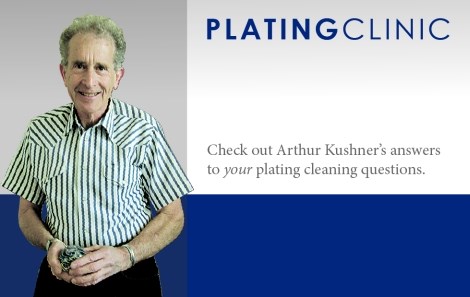Plating Q&A: Gold Pitting Problem
A Products Finishing reader writes to Art Kushner: How can we solve problems with pitting and haze on our hard gold deposit?
#pollutioncontrol #masking

A Products Finishing reader writes to Art Kushner:
Featured Content
Q. How can we solve problems with pitting and haze on our hard gold deposit?—J.R.
A. Pitting can be caused by a number of different factors. Hydrogen gassing, particulate matter suspended in the plating solution and inadequate cleaning of the base material are three common causes.
Hydrogen gas formed during the plating process can stick to the surface of the parts being plated. If the bubbles that stick to the surface do not slide off rapidly, the plate will form pits. Typically, a pit due to hydrogen has a “small” tail. In most plating baths, this problem can be minimized by adding wetting agents/surfactants. The problem also can be minimized by increasing the agitation of the bath. Depending on the type of agitation, different wetting agents may be required.
To see Art's complete answer, please click HERE
Also, to see all of Art Kushner's answers to reader questions, please visit our Plating Zone by clicking HERE
RELATED CONTENT
-
8 Things You Need to Know About Paint Booth Lighting
Global Finishing Solutions has come up with some helpful insights on lighting for paints booths which plays a crucial role in achieving a quality paint job.
-
Smut and Desmutting
Question: I am new to this industry and have heard about smut and desmutting operations.
-
Cyanide Destruction: A New Look at an Age-Old Problem
Cyanide in mining and industrial wastewaters has been around from the beginning, including electroplating processes. This presentation reviews a number of current processes, and in particular, offers new technologies for improvement in cyanide destruction by the most common process, using sodium hypochlorite.


















